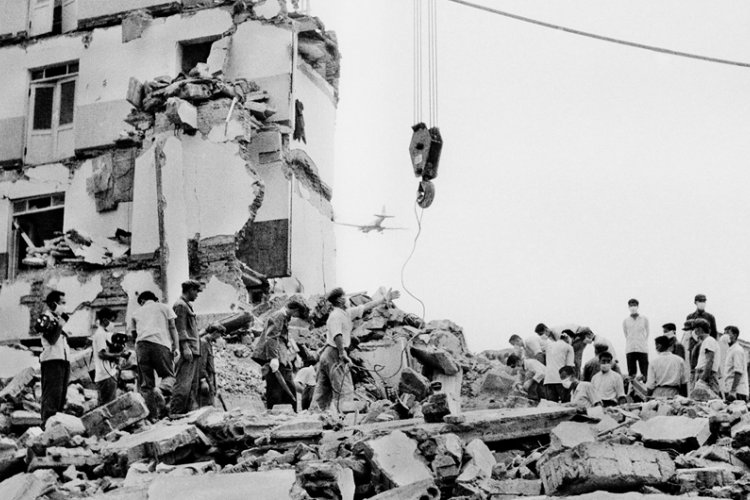In Case You Were Also Wondering: How Earthquake Prone is Beijing?
Japan’s devastating tsunami-quake-nuclear crisis may be old news by now, but the alarming number of super-tremblors that have wreaked havoc around the world in recent years should be enough to make anyone wary of an earth-shattering catastrophe occurring in their own backyard.
China, of course, has seen its share of death and destruction over the centuries – after all, much of the country sits on the “junctions of several tectonic plates, including the Pacific, the Eurasian and the Indian Ocean plates with at least 495 faults crisscrossing its topography.” Scientists recently determined that at least 130 of these fault lines lie beneath major cities, including Beijing, Shanghai and Guangzhou, but also pointed out that 80 of the are “inactive” (though this may not be so reassuring considering the unspecified nature of the other 40 and this NYT report on how scientists have historically underestimated the power of earthquakes).
The China Daily also reports that the China Earthquake Administration (CEA) will invest 67 percent of its RMB 2.91 billion budget in “monitoring, research, analysis, damage prevention and emergency rescues,” money that would be well-spent (if correctly apportioned, mind you) considering plans to build a series of dams on the Nu River in southwestern China and how our fair city happens to sit on three major fault lines, including the Babaoshan Fault Line running from Dahuichang in western Beijing to Shunyi in the city’s northeast (we have yet to find word online on where the other two may lie).
There’s no telling what Mother Nature has in store next, but given the Capital’s notoriously large concentration of subpar construction (I still remember feeling our entire 28-story Wanda Plaza office building shudder and sway from our then 12th-floor office during the 2008 Sichuan quake over 2,000 km away), we’d better hope and pray Beijing’s not next on her hit-list.
To quote from this 2009 paper in the Chinese Journal of Geophysics that assesses "seismic hazard and risk in Beijing-Tianjin-Tangshan area from 500-year intensity observations”: “We … estimated the corresponding intensity with 10 percent probability of exceedance in 50 years. The results show that the area has high seismic risk and the current design requirement for the area may not be adequate.”
And, for what it’s worth, click here for a few pointers from FEMA (the Federal Emergency Management Agency of the United States) on what to do if a big one strikes.
Related stories :
Comments
New comments are displayed first.Comments
![]() Jerry
Submitted by Guest on Fri, 03/25/2011 - 04:02 Permalink
Jerry
Submitted by Guest on Fri, 03/25/2011 - 04:02 Permalink
Re: In Case You Were Also Wondering: How Earthquake Prone ...
Yup, definitely glad for that, but considering the magnitude in Beijing that day was only around 3.4, I wonder what would happen if a 6+ earthquake were ever to hit Beijing. Fingers crossed and god forbid that never happens.
![]() advalorem
Submitted by Guest on Thu, 03/24/2011 - 12:23 Permalink
advalorem
Submitted by Guest on Thu, 03/24/2011 - 12:23 Permalink
Re: In Case You Were Also Wondering: How Earthquake Prone ...
Your Wanda Plaza office tower did exactly what it was supposed to do; sway. If it didn't sway, it could snap.
Here's some info about tall buildings and earthquakes: https://mathspig.wordpress.com/tag/calulate-skyscraper-sway/
Validate your mobile phone number to post comments.






